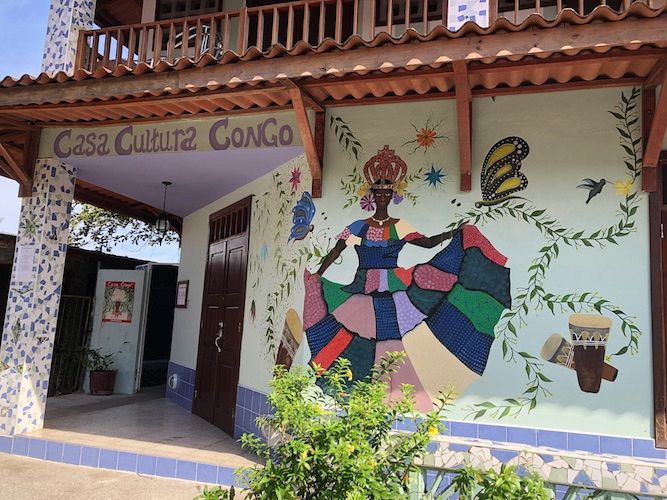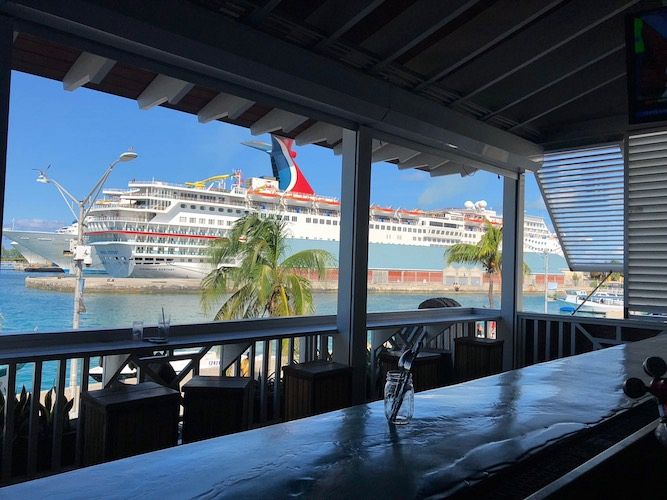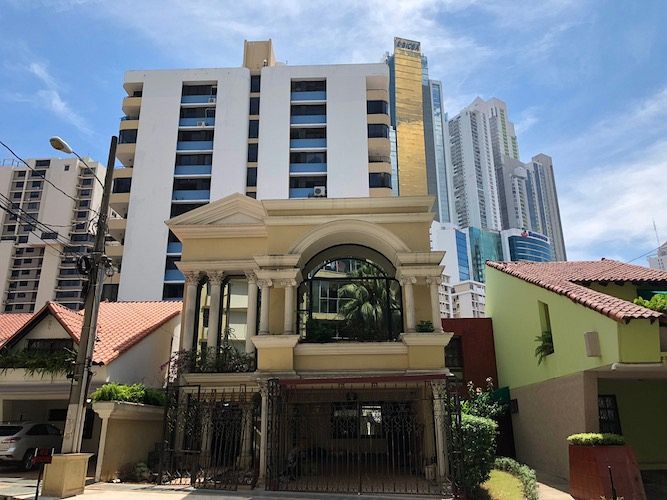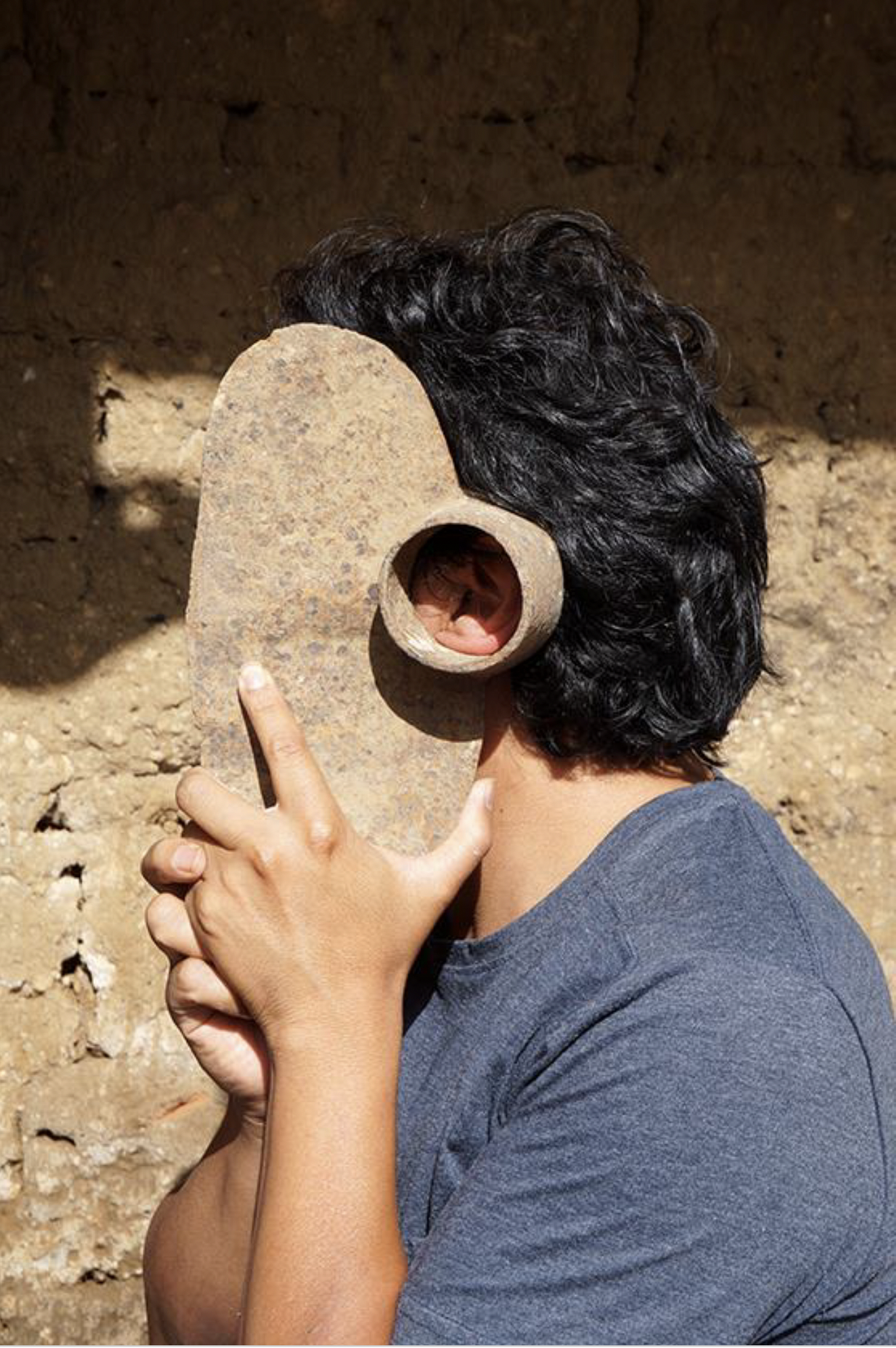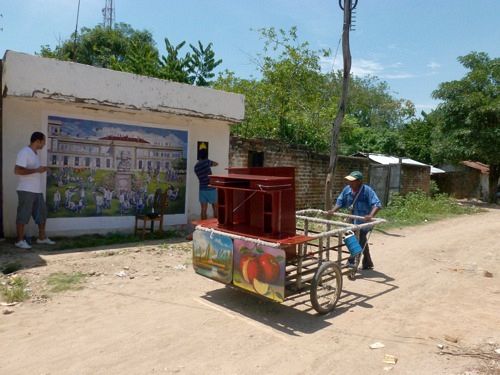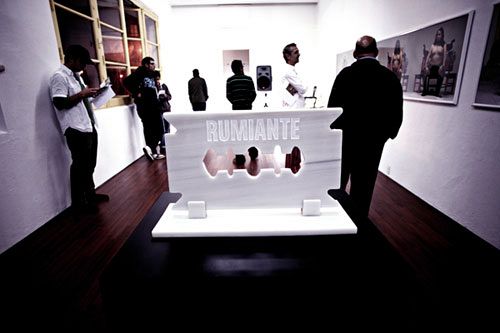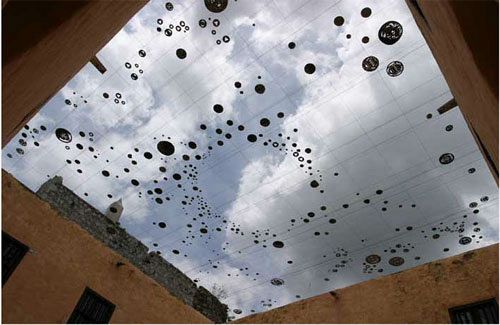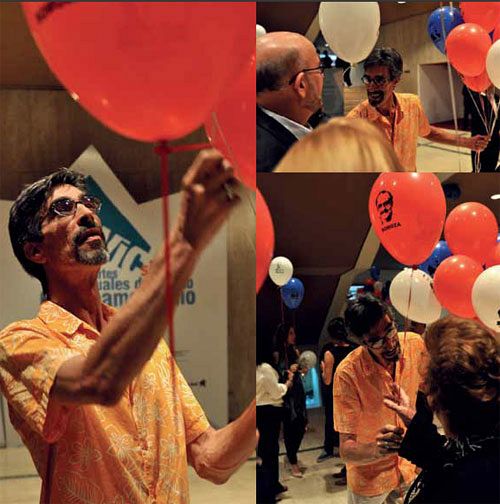Marina Reyes Franco, recipient of the 2017 CPPC Travel Award, reflects on the "visitor economy" during her research trips to Panama, The Bahamas, Jamaica, the Dominican Republic, and Trinidad.

On September 6th 2017, Hurricane Irma made her way through Puerto Rico, after having ravaged through most of the Leeward Islands, leaving some places simply uninhabitable and laying bare post colonial social structures of foreign privilege, local servitude, and the inescapable reality of climate change. That night I was almost a thousand kilometers away from home, in Port of Spain, the capital of the dual island nation of Trinidad & Tobago, and I didn’t even feel a breeze. Those of us glued to social media were treated to all kinds of apocalyptic images of destroyed homes, hospitals, schools, boats —and resort hotels. Overnight, the livelihood of hundreds of thousands of people across the Caribbean islands was shattered along with their homes. Barbuda was left deserted for the first time in modern history. I was in Port of Spain for the first of my five CPPC Travel Award trips around the region, researching the cultural impact of tourism and the construction of ideas of paradise as it relates to art, exhibition-making, taxes, real estate, and the lives of artists and other cultural producers. In Trinidad, however, I was mostly interested in the resignification of post military spaces after the US was forced out of Trinidad, specifically in the former US Navy base in Chaguaramas, and very curious about a Caribbean island living off an oil economy, as opposed to tourism. From my room at Alice Yard, the art space that was hosting me, I monitored the situation back home and felt a sense of relief when the hurricane veered north and most of the destruction was contained to the East. A few people in Puerto Rico’s government thought we were very lucky too: with so many islands closed for business, they were very eager to turn Puerto Rico into the European vacationers’ go-to destination. Little did they know, Hurricane Maria would make landfall in Puerto Rico two weeks later, completely obliterating whatever plans they had for the visitor economy regime.

A former Spanish colony, Puerto Rico consists of a group of islands that has been a “possession” of the United States since their invasion during the 1898 Spanish-American War. Once a showcase of American progress during the Cold War, Puerto Rico lost prominence with US interests after the collapse of the Soviet Union rendered obsolete its strategically advantageous military position. The establishment of free trade agreements in the 1990s and the subsequent phasing out of Section 936 of the US tax code, which had provided incentives for American manufacturing and pharmaceutical companies operating in Puerto Rico, sealed the fate of it’s economy. After a decade of progressive economic collapse, Puerto Rico is severely in debt and under the thumb of a US-appointed fiscal control board enabled by the PROMESA Act, which supervises the imposition of severe austerity measures, while favoring tax haven laws. Our salvation, many think, lies in tourism.
The first time I heard the term “visitor economy” was in 2014 when I returned to Puerto Rico to my very own kind of cultural shock after living in Argentina for 6 years. I’d left months before the housing crisis in the US exploded, and came back a few months before our 123 billion dollar debt was declared unpayable by then Governor Alejandro García Padilla. I returned to live in Old San Juan, the colonial town where I grew up, but this time the place had the look and feel of a plein air Airbnb, part boutique hotel town, part cruise ship day trippers’ nightmare of souvenir shops and outlet stores. Needless to say, I was angry. The “visitor economy” is a term mostly used in British or Australian tourism sectors to denote the economic activity -goods consumed and services rendered- by people who visit a place. This kind of economy takes into account a wide variety of touristic activity: medical, educational, business, cultural and artistic, agricultural, ecological, religious, sporting, literary, musical and artistic events, as well as people who own vacation homes or decide to retire there. The term permeates practically all aspects of life, transforming society to serve the visitor. Hospitals can be medical tourism destinations and university systems attract foreign students. The arts make a place a “great destination”, creating a permanent performance of culture and nationality in which spectacle is encouraged and the long-term sustainability of the artistic community is mostly neglected. The complex exercise of constantly seeing ourselves as how we think others perceive us is maddening.
Since its founding in 2011, a local non profit organization called Foundation for Puerto Rico has been lobbying government and financing studies that present the visitor economy as the best way out of the depression. The first time I went to the FPR offices was actually to attend the opening party of Colaboratorio, the office space shared by FPR and other cultural and, above all, entrepreneurial NGOs. After bumping into some friends on the street, I ended up attending, along with a who’s who of the collusion between non-profits, politics, American investors and a handful of artists. That night I found out about Jon Borschow, his vision for Puerto Rico and who he has been working with to achieve the goals Foundation for Puerto Rico has set for this country. In a previous interview with Jon Borschow, we discussed the aims of his visitor economy plans. Will people just visit or become permanent tourists? According to Borschow, part of the plan is to attract people who will establish businesses in Puerto Rico and also retire there. They will “become Puerto Rican.” A key component to the visitor economy is Act 20 and Act 22, which provide attractive tax incentives for companies that establish and expand their export services businesses in the island and Seeks to attract new residents to Puerto Rico by providing a total exemption from Puerto Rico income taxes on all passive income realized or accrued after becoming residents of Puerto Rico. According to Borschow, “Puerto Rico is just wonderful and special, so people can come here and they’ll find an extraordinary place to live at any stage of their life. Certainly a great place to retire as well. We’re under the protection of the United States, we’re part of the United States, and yet we have this exotic, warm, beautiful way about us.” In a country where, even without the post Maria devastation, thousands had already been pushed out and migrated to the US due to economic stress, these incentives only reinforce the old idea of development by invitation that has permeated throughout the region. Now Borschow has become the leader of the newly established Destination Management Organization in Puerto Rico, effectively phasing out the Tourism Company while simultaneously operating with public money. In Spanish, “destination management” translates to “manejo de destino,” or destiny management. Definitely, an ominous term.
For the ICI / Colección Patricia Phelps de Cisneros Travel Award for Central America and the Caribbean 2017, I proposed a research trip through Panama, The Bahamas, Jamaica, the Dominican Republic and Trinidad. As I visited each country, I focused on what was the brand identity of each place, how it has been historically marketed, which cultural production is most privileged or given resources, and how artists and cultural workers deal with the neo-colonial impositions brought on by the tourism trade. The now manicured tropics of landscape architecture and Instagram feeds that sell real estate, goods, and services to the new foreign investor or tourist, who inevitably hail from the same power centers that first colonized the land, make us wonder who constructs paradise as a concept and who consumes it the most. In their search for the perfect holiday destination, the tourism industry has acquired and transformed the land in response to huge consumer demand. Mass tourism in the Caribbean started around 1960, but in recent years there has been a push to shift the narrative from “sun, sand and sea” to one where culture is central to the marketing of the country as a brand. With every island being seemingly alike, and resorts replicating their experience without much variation, competition amongst neighbors has increased. Think the “same shit, different island” t-shirts of a rasta giving the finger to a white tourist, whose only variation is the name of the country printed below the phrase.
This time around, I have experienced the Caribbean between two monstrous hurricanes that have forever altered the way we live. I wasn’t in Puerto Rico when Hurricane María hit either. I was at a conference in India and finally made it back home after being stranded in New York for 4 days. During those days, I spent my time making sure friends and family were okay, buying supplies to take back home and doing volunteer work with other Puerto Ricans in the diaspora. My not being home during that time puts me in the uncomfortable position of being a tourist, both in the countries I’ve visited, as well as in my own, for the better half of 2017. The hurricanes have made evident the structural problems of class and race that are bound to economic interests, debt management and development schemes throughout the Caribbean. The most "Instagrammable" green landscapes turned brown because of the wind and salt water brought on by the storms. The aerial shots that had previously sold the Caribbean both metaphorically and literally have now regained their original militaristic function as the US military drops in to deliver uneatable FEMA food or drone footage shows the destruction below. Suddenly, we were made aware of the actual geography of our surroundings, as the lush trees lost all their leaves and we could see what lay beyond. The lack of communication and inefficient response experienced in the immediate aftermath of Maria made everybody hyperaware of the vulnerabilities brought on by colonialism, austerity measures and corruption. The history of many countries in the Caribbean will be understood as before and after this moment. We have realized that the answers to our problems lay within us and our communities - both at home and abroad.

During my first night in Trinidad, Christopher Cozier took me to see Fiesta Plaza in Movie Towne. The mall recreates the long demolished architecture of Port Of Spain and longs to attract more local visitors and tourists with a planned but delayed expansion that would see the construction of a theme park in the sea front. Fiesta Plaza also features a plaza-like atmosphere and a stage for musical performances. The other possible plan -proposed by another government admin- would transform the property in the back into a luxury hospital/spa and recovery center. I'm wondering if the dip in oil prices and economic recession will make Trinidad seek development of their ignored tourism sector. In contrast to the rest of the Caribbean islands, Trinidad is dependent on an oil economy. The island has developed tourism plans as a way to diverse the economy, but they're not really implemented. With the economic downturn the island is experiencing due to low oil and natural gas prices, it's becoming imperative that the country find alternative industries to develop. Right now, the tourism industry is mostly business related, with Trinidad, as the bigger island with more infrastructure, serving as a regional conference hub.

The #1000mokos project grew from the curiosity of designers Chen, Josh Lue Chee Kong and architect Michael Lee Poy, and aims to build a community of a thousand mokos (stiltwalkers) across Trinidad and Tobago through a series of workshops, walk-abouts around Woodbrook and country-wide gatherings. #1000mokos has been specially effective in connecting a younger urban generation to traditional masquerade, rhythm, choreography and history, and as well as the design and technology innovations that are inherent in stiltwalking. According to Moko Jumbies scholar Milla Cozart Riggio, the Moko is the Orisha god of fate and retribution, and its participation in carnival links masquerade to the Yoruba. A Moko is believe to have walked across the Atlantic Ocean from the West Coast of Africa, and is a sort of guardian that, having endured centuries of mistreatment, still stands tall. He is represented on stilts, draped in cloth and usually wearing a mask. When a person plays Moko, the masquerader temporarily transforms into the spirit of the Moko. Not all stilt walkers are Mokos but all Mokos are on stilts.

Sandra Eleta is a well-known Panamanian photographer who also owns La Morada hotel in Portobelo, Panama, a fishing village famous for its history of cimarrones, congos, pirates, the black Christ and the polleras and diablitos festivities. In the 1970s she founded a women’s coop that made traditional quilts and clothes for over a decade. In 1993 she continued the cultural work in the region by reopening the Portobelo Workshop for painters. She also presides the Portobelo Bay Foundation, which runs a music school, art space, restaurant, and other community oriented activities.

The Bahamas are limestone islands, not volcanic like the vast majority is the Caribbean islands. This shaped its original flora, but its landscape was subsequently altered to better fit tropical narratives.

They were founded following independence in a frankly strange but not surprising colonial move. The obelisk in the entrance has an inscription that says TOGETHER FORWARD UPWARD and is dedicated “to the people of the Bahama Islands at the birth of their nation July 10, 1973 from the people of Delta Airlines (insert corporate logo).” From one colonizer to the next. From galleon to cruise ship.

Gustavo Esquina is one of the painters drawing on the Panamanian tradition of the Congos on the Caribbean coast, that are part of the Portobelo Workshop. I was able to interview him about the history of the space, the workshop’s relationship to tourism, the iconography of the paintings and the difference between painting for a living and making art. The workshop was founded by Sandra Eleta’s in 1993 as a space for painters, under the guidance of artist and professor Arturo Lindsay. Some of the original painters are Yaneca Esquina, Jerónima Chiari, Ariel “Pajarito” Jiménez. Gustavo, son of Yaneca, is part of the newer group of artists, who range in age from the 70s to his 24 year-old sister.

